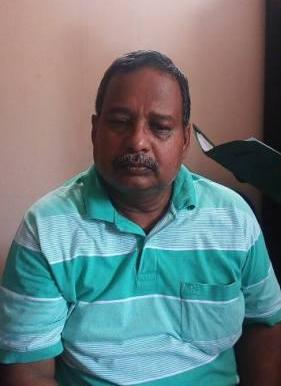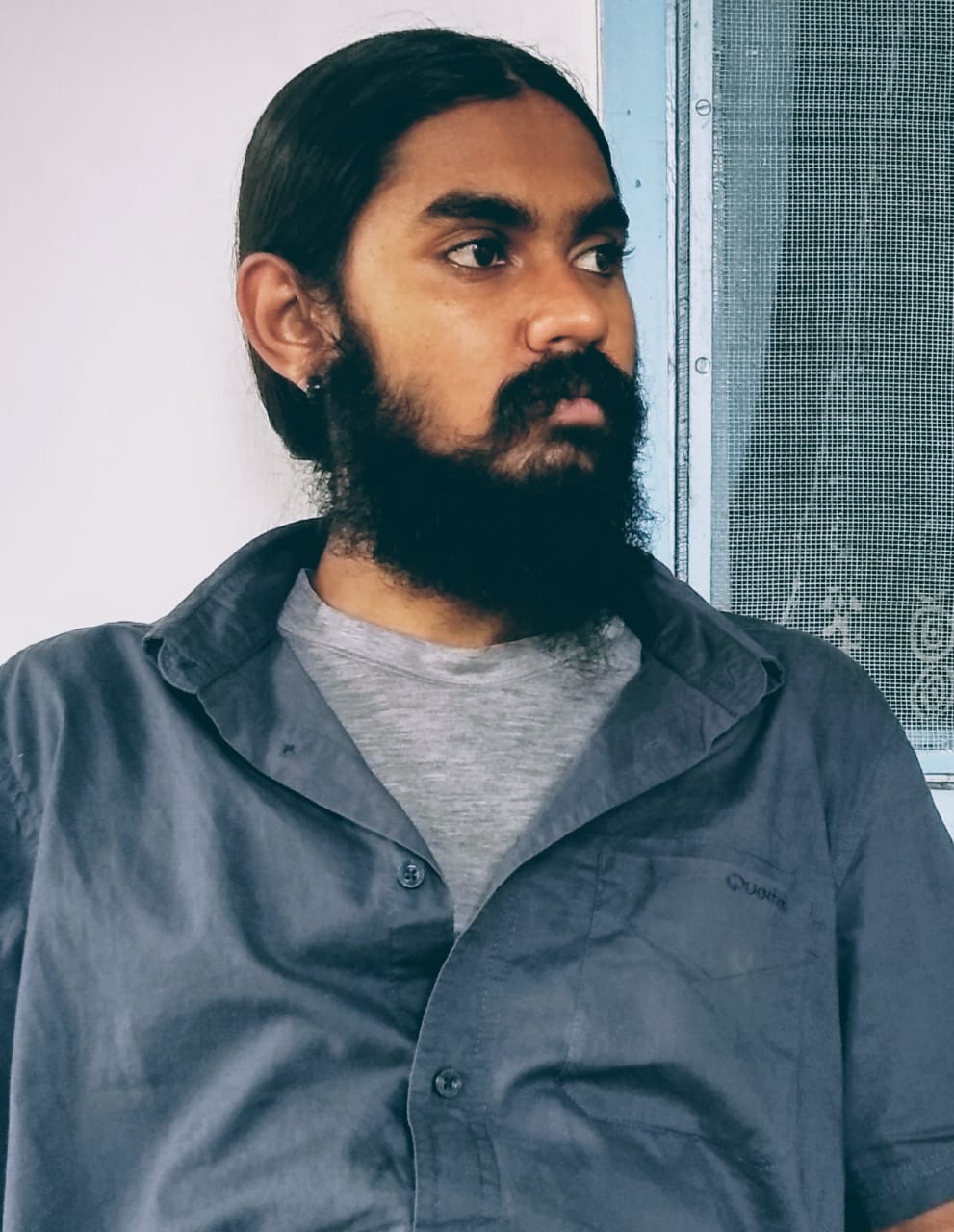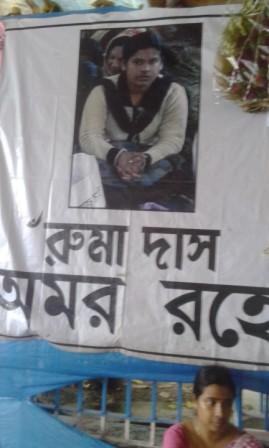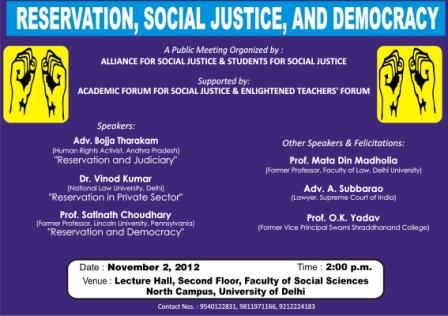Sangram Keshari Mallick
 September 2015.
September 2015.
There is ample discussion these days on the achievements of Sri Naveen Patnaik in the first year of his fourth innings in power. While different writers have highlighted many other issues, this write up shall be restricted to discuss the condition of SCs and STs who constitute 39.98% population of the State. The attitude of the Government towards Scheduled Castes and Scheduled Tribes during the 15 year regime of Naveen Patnaik raises too many questions that beg answers. Soon after he came to power (yet again), during the post super cyclone reconstruction period, there were allegations of discriminatory treatment meted out to the Scheduled Castes. In January 2002, the Government used its machinery to murder 15 Tribals to protect and promote TATAs in Kalinganagar. In fact, such discrimination during natural calamities has been a regular phenomenon in the State, which was clearly visible during the same regime in 2008 & 2011 floods and Phailin & Hudhud cyclone.
Further, the anti-people and pro-corporate/industry role of the government was sparklingly prominent at POSCO, Niyamagiri, Vedanta University, Ravishankar University, KIIT University etc. During this regime the country witnessed the fire-breathing RSS/VHP leaders carrying the dead body of Laxmanananda resulting in rape, murder and arson on the converted dalit Christians in Kandhamal while the administration remained a mute spectator. The State also experienced the SC and ST conflict at Narayanpatana due to the negligence of the Revenue department. The ministers of this government have not only tried to demoralize SC & ST officers with derogatory statements in public meetings, some of them even justified the practice of untouchability in temples under the garb of tradition, although it is unconstitutional and against the verdict of the High Court. During these 15 years, no SC/ST officer has been the head of the ST & SC Development Department; rather Brahmin officers ruled this department for nearly 14 years and the balance 1 year by another non-SC/ST officer. This shows that the lapses in planning and implementation of different programs for these communities were deliberate.
Looking at the following aspects can give us a realistic picture of state of affairs:
Promotion of SC & ST Leadership, a far cry
During this regime, the State saw a new phenomenon of de facto power centres of some administrative officers over people’s representatives. The method of choosing spineless leaders and discarding persons with love for community and self-respect was ruthlessly followed. SC/ST leaders being the worst sufferers in this. In the process of selecting candidates during the last general election, 33 sitting MPs and MLAs were denied tickets, out of which 23 were SC/ST. Non SC/ST persons were rewarded with party tickets despite very serious allegations against many of them, whereas SC/ST leaders were dropped. The underlying intention of such large scale poaching of SC/ST leaders was nothing but to not let them consolidate their leadership. In the post election period, new ministries was formed, but not a single SC/ST MLA was given any important portfolio. Sri Lalbihari Himirika was given ST & SC Development Department, which was constitutionally mandatory; the other cabinet minister was Jogendra Behera who is not considered as SC by the community due to his touchable caste origin. Soon, political appointments in different corporations, boards and commissions followed. There was none but a lone SC lady, Minati Behera chosen for the Disabled Commission.
Economic Emancipation denied to SCs & STs
The development of SC/ST communities is directly proportionate to the economic freedom of these social groups. Naveen’s policy has been to provide relief to the communities instead of making them self-reliant. The SC/STs have not been given possession of adequate agricultural land and favourable conditions for business and industry. On the contrary, emphasis was laid on Rs.1/- per K.G. rice, recently followed Rs.5/- per meal (lunch) and other poverty alleviation programs. Despite several propagated programs, 63.52% of Scheduled Tribes population and 41.39% of Scheduled Caste population are poor as per Economic Survey Report-2014-15. The intention of the government can be judged from the fact that funds to the tune of Rs.1583.18 Crores, Rs.1387.49 Crores and Rs.1189.11 Crores, in the years 2014-15, 2013-14 and 2012-13 respectively, were diverted from Scheduled Caste Sub Plan (SCSP) & Tribal Sub Plan (TSP) to general schemes.
Second, no high value beneficiary driven program has been adopted by the government with TSP & SCSP allocations with the objectives of making the individuals/families adequately self-sufficient. The SC & ST Development Finance Corporation has stopped high cost financing. But small loans for agriculture, poultry and animal rearing are given to youths from these communities. It seems that the government is of the opinion that SC/ST persons are not capable enough to handle big business. Out of 385 working mines in the State with annual production of over Rs.30000 Crores, SC/ST ownership is almost nil. In the government tenders for different construction work, SC/ST contractors provide their licenses to be used by other community contractors due to lack of working capital. May be this government believes in the neo-liberalization era ‘trickle down’ theory.
Social Sector development is yet to percolate through
The status of development of Keonjhar district, the highest revenue yielding district can be taken into consideration. As per Census-2011, the total population of the district was 1801733, out of which 209357 (11.62%) were SC and 818878 (45.45%) were ST. The literacy rate was 68.24% whereas the State figure was 72.87%. The women’s literacy rate was much below at 58.28%. Out of total 405272 dwelling houses, 74.9% houses had earthen floors, 65% houses had earthen walls, 29% had thatched roofs, 31% had handmade tiled roofs, 20% had machine made tile roofs, only 9% had RCC roofs. Further, 86% houses did not have bathrooms, 84% did not have toilets and 88% did not have drainage facility. 68% houses burnt Kerosene lamps, 0.9% houses did not have any lighting facility at all and only 10% houses had piped water connection. 78% families live in one-roomed/ two roomed houses. This trend clearly shows the status of development of the district with 57% SC/ST population and is indicative of the condition of these communities in the State.
The much-publicized 1000 girls hostels for Tribals and 100 hostels for SC girls is a matter of much concern now, as a number of minor inmates of the hostels have attained untimely motherhood. The mismanagement of the schools run by ST & SC Department has been in the news in the State many a times. Many of the government run schools and hostels do not have even minimum security and other facilities. As such the focus of the Government has been on the enrolment of SC/ST children to make them literate or at best ITI trained to earn bread but not on higher/technical/professional / overseas education to make them well off.
Self-Respect & Human Rights vis-à-vis Status quo of Tradition
In proportionate to the level of awareness and education, demand for self-respect and human rights of subdued SC/STs have grown. This phenomenon is considered as an encroachment into the rights of other communities. As a result, there have been an increasing number of cases under SC & ST POA Act every year. But the government machinery, as usual, has been status-quoist and hence the victims suffer. The conviction rate has been a dismal 4-6% which shows the interest of the administration to dispense justice to these communities. Most of the victims are either pressurized through counter cases, threats, social boycott etc. or won over through other means to agree for out of court settlements. The investigating and prosecuting agencies become parties to such compromises in many cases.
Thanks to the repeated demands by different organizations, the SC ST Protection Cell was formed as late as 2013. The seriousness of the government in the matter can be gauged from the fact that the statutory half-yearly meeting of State Level Vigilance and Monitoring Committee under the chairmanship of the Chief Minister met last on 5.6.2015 after 2.8.2013. The District Level Vigilance and Monitoring meetings follow the master at the top.
The latest ploy to win over SC/STs
Recently, there has been a competition between two major national parties to woo the SC/ST voters through ownership of Dr. Ambedkar’s legacy. The BJD could not afford to lag behind in the race. As a result the much-awaited declaration to enhance the reservation in higher education for the SC/STs has come through, although not as per Census 2011. The stipend amount has been raised.Most importantly after hundreds of government schemes, programs, institutions named after Late Biju Patnaik, for the first time, a Medical College has been named after a Tribal leader. Perhaps, Naveen & Co. are apprehensive of losing this vote bank as the communities are slowly getting aware of the method of duping through 27 paise per day per vote (Rs.500 / 365 /5 = Rs.0.27) at the time of election to gain power to spend Rs. 500000 Crores in five years.
Conclusion
As per the reports of the government, the SC/ST situation in the State is in a buoyant condition. The Intelligence reports, secret surveys and the office bearers of the party provide ALL IS WELL input to His Majesty day in and day out. So let us look at the situation of SC/ST communities in the State through His Majesty’s glasses so that we shall not have to lose our sleep any further?
~~~
Sangram Keshari Mallick is a co-founder, member of the Ambedkar Lohia Vichar Manch in Odisha and is a well known writer and activist. He has been part of Adhikar, Odisha’s leading progressive magazine since 1994.










